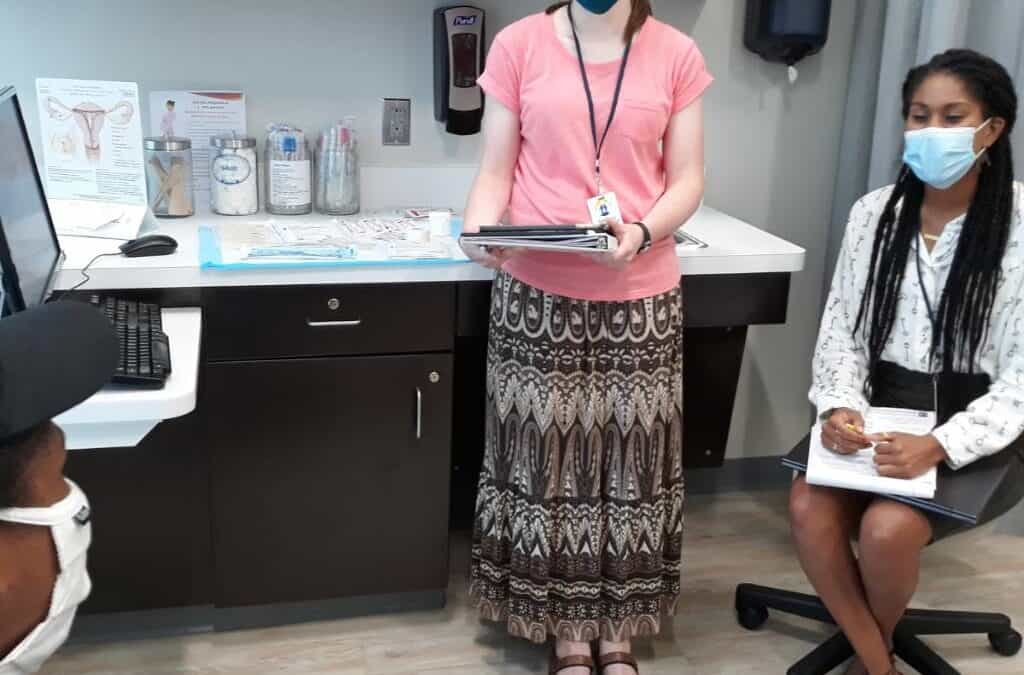By Katie V
The COVID-19 pandemic caused the Philadelphia Summer Medical Institute (SMI) to be different this year. Instead of going door-to-door to provide health screenings, we worked with Esperanza Health Center (EHC) to complete some clerical and administrative tasks. My team completed social determinants of health (SDOH) surveys for patients at EHC for appointments or over the phone.
Social determinants of health are factors other than healthcare and genetics that impact people’s health status. This is a topic that we discuss often in my Occupational Therapy program because healthcare only represents about 10% of the factors that influence health and wellbeing. SDOH are factors that have a large impact on health outcomes and include education, access to healthy food, economic stability, the neighborhood you live in, and social support. Research suggests that more than anything else, zip code is the best predictor of life expectancy because of social and environmental factors that influence wellbeing. EHC aims to ask patients a series of questions each year to learn about their ability to access certain resources such as food, housing, transportation, healthcare, clothing, and childcare, as well as their education level and employment status. If patients report having a certain need, EHC and the social services employees can help connect them with resources like local food banks and housing support.
In addition to asking survey questions, we were able to offer prayer for patients and their families. About half of the patients that my group surveyed wanted us to pray aloud with them, and we had the opportunity to pray for their health and safety during the pandemic and for other challenges they were facing like unemployment as a result of COVID. A few patients even chose to pray for us and for our time in school and futures as healthcare providers. It was really unique and heartwarming to witness how spirituality can play a key role in a healthcare setting.
We all became accustomed to wearing facemasks and sometimes I forgot I had one on. At times it was challenging to connect with people because we were always wearing masks and could only see part of each other’s faces. Delka, the woman who trained us to do SDOH surveys and use electronic health records, took off her mask when she introduced herself to show us what she looks like under her mask and that she really is always smiling. Wearing masks was a great analogy for how we perceive sin. We talked about how it seems like sin is so much more prevalent as a communal issue in the neighborhoods in North Philly because it is easy to see evidence of brokenness. However, we were reminded that there is a lot of sin in other places too, it is just often more hidden from sight and not displayed openly on street corners. David, who led most of our Biblical Foundations courses, reminded us that if sin is the size of a sandcastle, the power of God’s redemption is a tsunami waiting to wash it away. Just because sin and brokenness might seem so apparent in these neighborhoods does not mean that God is not present there. We believe in a God of restoration who uses broken situations for his glory.
